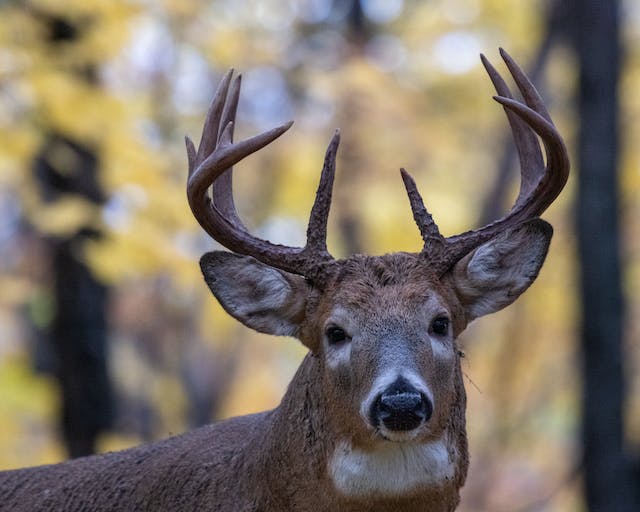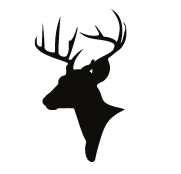Connecticut Hunting Seasons 2024-2025: Rules and Regulations

Nestled between the bustling metropolitan areas of New York and Boston, Connecticut offers a surprising array of hunting opportunities. Despite its smaller size, the Constitution State is home to diverse ecosystems ranging from coastal marshlands to rolling hills and dense forests.
Understanding Connecticut’s hunting regulations, seasons, and requirements is essential for both resident and visiting hunters. This guide provides insights into the Connecticut hunting seasons for the 2024-2025 timeframe, touches on licensing and permitting, and offers an overview of key hunting regulations.
Connecticut presents hunting opportunities for game species such as white-tailed deer, wild turkey, and waterfowl. Additionally, small game hunts for species like pheasant, rabbit, and squirrel are available.
Connecticut Deer Seasons
| Hunting Method/Type | Dates |
|---|---|
| Archery – Private Land | Sept. 15-Dec. 31, Jan. 1-31** |
| Archery – State Land Bowhunting Only Areas | Sept. 15-Dec. 30** |
| Archery – State Land | Sept. 15-Dec. 30** |
| State Land Lottery Hunt – A Season | Nov. 15-24 |
| State Land Lottery Hunt – Regular Lottery Season | Nov. 15-Dec. 5 |
| State Land No-Lottery Hunt | Nov. 15-Dec. 5 |
| Private Land Firearms Hunt | Nov. 15-Dec. 5 |
| Landowner Hunt | Nov. 1-Dec. 30 |
| State Land Muzzleloader | Dec. 6-19 |
| Private Land Muzzleloader | Dec. 6-30 |
| Junior Hunt | Nov. 4-11 |
* Season dates vary by zone.
Connecticut Turkey Seasons
| Hunting Method/Type | Dates |
|---|---|
| Fall Archery – Private Land (Zones 11-12) | Jan. 2-31 |
| Fall Archery – Private Land | Sept. 15-Dec. 30 |
| Fall Archery – State Land Bowhunting Only Areas | Sept. 15-Dec. 30 |
| Fall Archery – State Land | Sept. 15-Nov. 14, Dec. 20-30 |
| Fall Firearms | Oct. 7-31 |
Connecticut Small Game Seasons
| Game | Season | Dates |
|---|---|---|
| Cottontail Rabbit & European Hare | – | Jan. 2-Feb. 28, Oct. 21-Dec. 31 |
| Gray Squirrel | – | Jan. 2-Feb. 28, Sept. 1-Dec. 30 |
| Snowshoe Hare | – | Jan. 2-31, Nov. 18-Dec. 30 |
| Woodchuck | – | March 15-Nov. 15 |
| Chuckar & Hungarian Partridge | – | Jan. 2-Feb. 28, Oct. 21-Dec. 30 |
| Quail | – | Oct. 21-Nov. 4 |
| Pheasant | – | Jan. 2-Feb. 28, Oct. 21-Dec. 30 |
| Ruffed Grouse | – | Oct. 21-Nov. 30 |
For further details, permit costs, and to purchase licenses or permits, the Connecticut Department of Energy and Environmental Protection’s website is the go-to resource. Junior hunters and those aged 16 and 17 may be eligible for discounted prices on certain permits, stamps, and tags.
Connecticut Hunting Seasons FAQ
Q1: How can I obtain a Connecticut hunting license? A: Connecticut hunting licenses can be purchased online through the Connecticut DEEP’s online portal. Additionally, licenses can be bought at select DEEP offices, town clerks, and authorized retail outlets throughout the state.
Q2: What’s the protocol for tagging harvested game in Connecticut? A: For certain game animals like deer and turkey, a tagging system is employed. Once harvested, the hunter is required to immediately complete and attach the appropriate tag. This process aids in game management and gathering harvest data.
Q3: Is it necessary to wear fluorescent orange during Connecticut’s hunting seasons? A: During specific hunting seasons, Connecticut mandates that hunters wear a set amount of fluorescent orange for visibility and safety. The exact requirements can vary by season and game, so always refer to the latest DEEP regulations.
Q4: How does Connecticut establish bag limits? A: The Connecticut DEEP sets bag limits based on rigorous scientific research, ongoing wildlife population monitoring, and public feedback. These limits ensure sustainable hunting practices and promote wildlife conservation.
Q5: Are there particular regulations regarding firearms and ammunition in Connecticut? A: Yes, Connecticut has defined rules about permissible firearms and ammunition for different game species. These rules can vary based on the species and hunting method. Hunters should always familiarize themselves with the latest state regulations before embarking on a hunt.
Q6: What steps should I take if I encounter a sick or injured animal while hunting? A: If you come across an animal that appears unwell or injured, it’s vital not to try to handle or dispatch it. Instead, report the situation to the Connecticut DEEP or a local game warden. This ensures the welfare of the animal and protects public safety.
Conclusion
Connecticut’s diverse landscapes offer rich hunting experiences, whether you’re stalking deer in the hardwood forests or pursuing waterfowl along the coastal marshes.
A solid understanding of hunting seasons, licensing processes, and ethical guidelines ensures a successful and respectful hunt.
By diligently following these regulations, hunters play a pivotal role in conserving Connecticut’s cherished hunting traditions and safeguarding its diverse wildlife for future generations.
